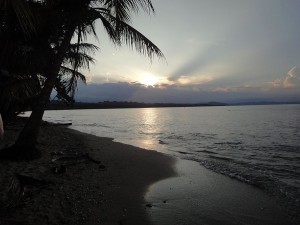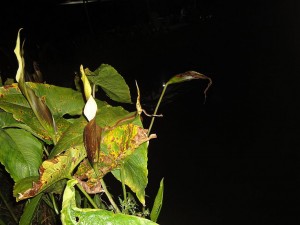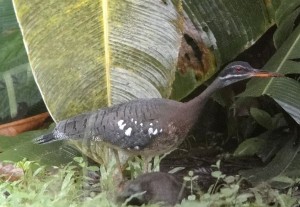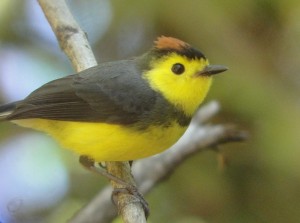The Northern Saw-whet Owl is a tough bird to see. While growing up in western New York, I was lucky enough to live in an area where, if you were patient enough, they could be readily seen. Finding a Northern Saw-whet involved a careful inspection of every pine and spruce in sites on the southern shore of Lake Ontario during Spring migration. That meant carrying out the search during the still cold months of March and April. We sometimes found them during the winter too but Spring was the best time to look.
Those taloned, wide-eyed sprites migrated along the lake shore instead of flying out over the evening waves and hid themselves in dense conifers to avoid daytime predators like Red-tailed Hawks. However, just because I lived in a “good” area to see Saw-whets didn’t translate to dozens of sightings. You could search for hours and come up with nothing but pine needle pricks and the encouraging yet disappointing signs that other owls had come and gone. It was always a great day when you could find at least one Saw-whet and it always helped to have more than one person looking.
Away from lake shores and known stake-outs, I have heard Northern Saw-whets in such places as Algonquin Park in Ontario, Canada, the Adirondacks, Washington State, and the upper peninsula of Michigan. But why talk about a bird that doesn’t live in Costa Rica? Why bother with a bird that can’t be seen in southern Central America?
I mention the Northern Saw-whet because as difficult as it is to see that cutest denizen of mixed hardwood forests, a lot more birders have laid eyes on it that one of its southern cousins. In fact, a lot of birders probably aren’t even aware that a Saw-whet Owl sans spots exists. That’s perfectly reasonable given the difficulty in seeing the Unspotted Saw-whet Owl. Compared to the Northern Saw-whet, I bet that it’s at least ten times more difficult to see if not a hundred times more difficult. Unlike the small spotted owl of northern forests, ye olde Unspotted does not provide us with the luxury of sizeable migratory populations. As far as is known (and that is precious little), it stays put in high elevation habitats of southern Mexico, Guatemala, Costa Rica, and Panama.
This means that if you want to find one, you have to head on up to the cold, often rainy places where it occurs, and stumble around at night while repeating a short whistled “toot” over and over. Yep, an endeavor reserved for the stout of heart or folks inflicted with bird-crazy foolishness. I would like to claim that I am of the former ilk (because that sounds more heroic) but I know in my heart that it’s probably the latter category that pushed me to walk around the cold, dripping, dark night forests on Cerro de la Muerte and move to another country far from home. To find the Unspotted Saw-whet, it seems like you have to not only be bird-crazy but also have about 100 times the patience and determination needed to see its northern sister.
In keeping with their mysterious nature, Unspotted Saw-whets haven’t been prone to turning up in the same places where they are found. Whether because they have moved on or because they only call and respond to calls at some unknown time of the year, you just can’t waltz on up to the exact place where one was seen several years in the past and refind them with a whistle or two. Well, at least that hasn’t been the case until recently.
After five years (!) of searching on and off for the near-mythical Unspotted Saw-whet Owl, guide and pro birder Ernesto Carman located two Unspotted Saw-whet Owls on Turrialba Volcano and at least one on Irazu Volcano in September, 2012. Not only was he happy to share the information, but he also offered to accompany myself and a few other people to try and see it! Although he hadn’t been seeing it on every visit, this was certainly the closest thing to a staked out Saw-whet ever since a nest had been studied several years ago (at Paraiso de Qetzales) so we jumped at the chance.
That “we” was myself, Robert Dean (who wanted to head up there immediately since this was his number one wanted species), Susan Blank, Johan Kuilder, and Ineke van Leeuwen. We had also planned on meeting up with a South African friend of ours but somehow missed him by a matter of minutes. In any case, after a bit of caffeinated beverages and baked goods at a bakery in Pacayas, we drove the scenic winding road on to the village of La Pastora and met up with Ernesto and his wife (I am ashamed to say that I don’t remember her name) at 5 PM.
The start of the road up to Turrialba Volcano at La Pastora.
Up the road towards Turrialba we went as dusk fell. We got out at one of the sites (a park-like area of scattered trees and pasture at 2,400 meters elevation) and were serenaded by Dusky Nightjars and Bare-shanked Screech-Owls as day turned into night. For the next hour and a half, we listened and whistled for the owl at two areas where he had the birds with nary a response. At one point, the rain started falling and all of us had private thoughts of failure. I was almost ready to try and be happy with the Barn Owl we had glimpsed until the sky cleared up and the air grew still. When that happened, we drove back to the first site and were immediately greeted by the faint yet distinct sound of an Unspotted Saw-whet Owl!
Searching for the Unspotted Saw-whet Owl. Sorry about the lack of photos. Looking for owls at night doesn’t work so well for digiscoping.
Practically running up the road in pursuit, the vocalizations grew in volume and buoyed our hopes. Would it stay long enough to see it? Please don’t fly!! The tooting suddenly stopped but then quickly started up again before disappointment could grab us and we followed Ernesto’s lead as he strode down into a pasture. Stumbling and falling over cow-chewed hummocks, logs, and wet grass, we tracked the bird down into a gnarled highland tree. One light then two were shining up into the branches but like its northern relative, it was hidden in the densest bunch of sticks. No matter where we shone the lights, we still couldn’t see it and then all of a sudden, there is was as it flew mothlike into the air!
A small tawny, uniform owl fluttering around in pursuit of some insect, there could be no mistake. That was the incredibly tough Unspotted Saw-whet Owl and realization set in that some of us could claim it as a seen lifer. Realization also set in, though, that not everyone in the group had seen it nor did we want to merely see it in flight. Heck, we didn’t even see its face or watch it stare at us with mesmerizing, predatory eyes!
Fortunately, the owl decided to hang around and call and Ernesto quickly got onto it with a beam of light. This time it stayed and all of us got prolonged, 15 minute, solidly soaking views of the Unspotted Saw-whet Owl! It called. It looked at us, We oohed and ahhed over its whitish brows, long wings (down to the tip of the tail), dark eyes, and possibility of it being a young bird searching for territory. Ernesto recorded its song and after we got our fill of this super tough and little known bird, we marched back up through the pastures to the cars and celebrated with champagne.
Ok, so the champagne is a fib but Robert did at least celebrate with 2 bottles of Guinness Stout that he so graciously shared with us. We thanked Ernesto, gave him a donation for his efforts and to support any possible Unspotted Saw-whet Owl projects, and then it was back down the mountain with a major tick and unforgettable experience under our belts.
Will the birds stick around? I don’t know but Ernesto is keeping an eye on them. Maybe we can find more on Poas and Barva? I am pretty sure I heard one call on Poas in similar habitat earlier this year…
























